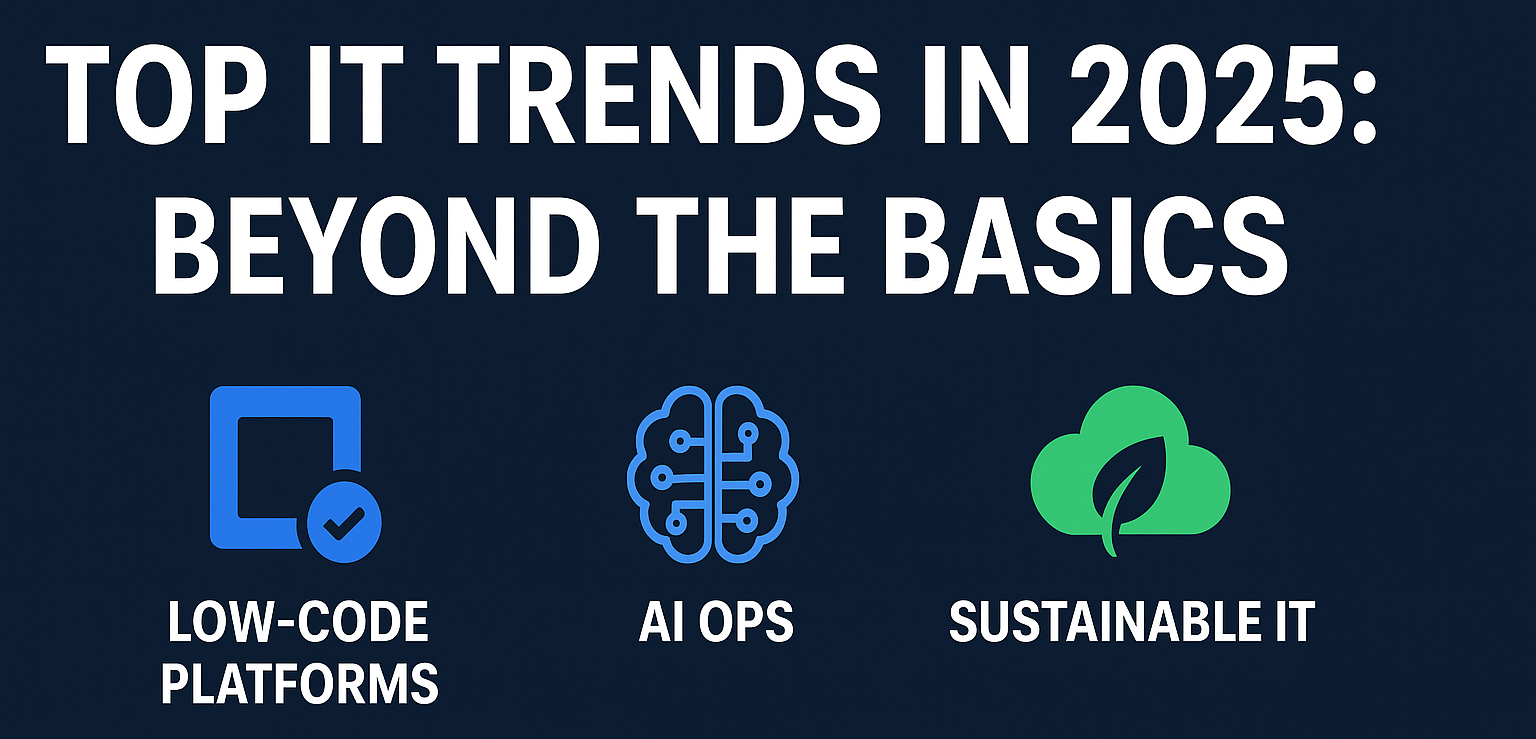The world of technology in 2025 is not just about keeping pace with change — it’s about anticipating it.
From AI-driven automation to sustainable cloud practices, IT leaders today face both an exciting opportunity and a complex challenge: how to innovate fast while keeping systems secure, scalable, and socially responsible.
At Techrays Labs, we work at the intersection of technology and business outcomes. Here’s our deep dive into the IT trends shaping 2025 — and what they mean for forward-thinking organizations.
1. Low-Code & No-Code Platforms Go Enterprise-Grade
Low-code and no-code development are no longer just for prototypes or internal tools.
In 2025, enterprise-grade low-code platforms are enabling organizations to launch production-ready apps in weeks, not months — without sacrificing security or scalability.
Why It Matters:
- Speed: Faster time-to-market for digital products.
- Cost Efficiency: Less dependency on large dev teams for simple modules.
- Citizen Development: Business users can directly build and adapt workflows.
Techrays Insight: We’ve seen clients integrate low-code modules into complex ERP or CRM systems, reducing backlog for IT teams while keeping governance intact.
2. AI Ops for Autonomous IT Operations
AI Ops — the use of AI and machine learning to automate and enhance IT operations — is moving from buzzword to backbone in 2025.
Key Capabilities in 2025:
- Predictive Incident Management: Detecting and resolving issues before they impact users.
- Intelligent Resource Allocation: Auto-scaling infrastructure in real-time.
- Noise Reduction: Filtering alerts to focus only on high-priority signals.
Why It Matters:
With IT ecosystems becoming increasingly complex, AI Ops is essential to maintain uptime, reduce operational costs, and improve user experience.
3. Sustainable IT & Green Cloud
Environmental sustainability is now a boardroom topic, and IT is a major player in this conversation.
Emerging Practices:
- Carbon-Aware Workloads: Scheduling compute jobs when renewable energy availability is higher.
- Data Center Optimization: Migrating to energy-efficient facilities.
- Sustainable Procurement: Choosing vendors committed to net-zero goals.
Why It Matters:
Apart from corporate responsibility, sustainable IT can reduce long-term costs through energy efficiency and optimized resource use.
4. Hyper-Automation Across Business Functions
While automation is not new, hyper-automation — integrating RPA, AI, and process mining — is redefining how entire departments operate.
Examples:
- Finance teams automating invoice processing end-to-end.
- HR teams using AI to manage onboarding, compliance, and training.
- Supply chain using IoT + AI for predictive logistics.
Techrays Labs Note: In our projects, hyper-automation is most successful when paired with strong change management, ensuring teams adapt to new workflows.
5. Privacy-Enhancing Technologies (PETs)
As data privacy regulations expand globally, PETs like federated learning, differential privacy, and homomorphic encryption are becoming mainstream.
Why It Matters:
- Allows organizations to leverage sensitive data for insights without compromising user privacy.
- Reduces compliance risks in regions with strict data laws.
6. Industry-Specific AI Models
Generic AI tools are giving way to vertical AI models trained for specific industries — from healthcare diagnostics to financial fraud detection.
Benefits:
- Higher accuracy for niche use cases.
- Reduced training costs since models start with domain knowledge.
Looking Ahead
2025 is a year where IT strategy will be judged not only on performance and cost but also on adaptability, ethics, and sustainability.
Organizations that can harness low-code agility, AI-powered operations, and green IT practices will have a competitive edge — and be better positioned for the decade ahead.
💡 Need a technology partner who’s ahead of the curve?
At Techrays Labs, we help businesses adopt the right innovations — not just the latest hype.
Talk to our experts →


